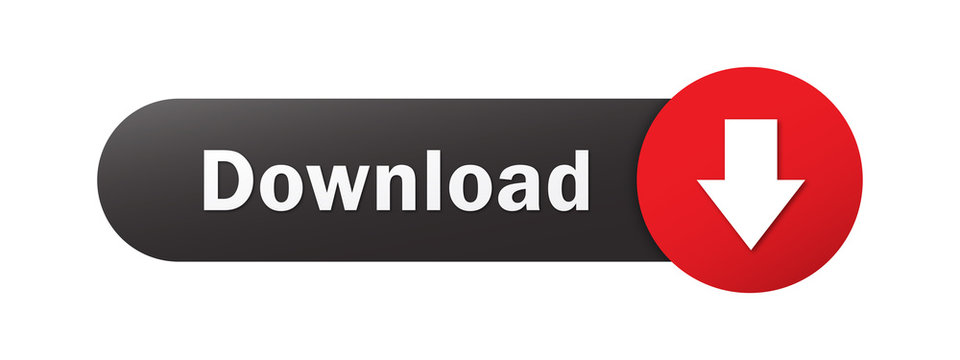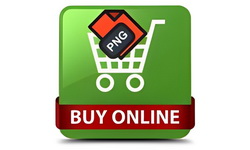You know you want to do some email marketing, but you’re not sure where to start. You think you might need a “Plan of Action,” but that sounds complicated and time consuming. Let’s face it: You’re too darn busy to spend hours and hours developing an email marketing plan. This guide is for you.
You’re smart to explore email marketing for your business. Current research suggests that email marketing is among the most cost effective marketing tactics available. Email marketing gets results. For example, the Ad Effectiveness Survey commissioned by Forbes Media in Feb/March 2009 reveals that email and e-newsletter marketing is considered the second most effective tool for generating conversions (that means custom¬ers)—just behind Search Engine Optimization (SEO). An email-marketing plan is easy to put together—we’ll take you through all the steps. We’ve included two fictional case studies. We’ll look at how these sample companies might complete each step in the planning process.
Step One: Define Your Readers
Before you start putting together email campaigns, you probably want to define your audience. Once you get a good idea of the folks reading your newsletters, it’ll be easier to decide what you want to say to them.
- Who do you want to be the primary readers of your email campaigns?
- Industry leaders and peers?
- Current and potential customers?
- Family and friends?
Once you define the group or groups you want to send to, you may even want to jot down a few bullet points to help define them a little more. Maybe a few key words that describe the people in the group and what the group will want to get out of your campaign. This will help you keep your newsletter content relevant to that group, and ultimately help ensure the success of your email marketing.
Step Two: Determine Your Purpose
Now that you know who you’re talking to, you can outline the overarching purpose of your email marketing. Your purpose is the reason you’re send¬ing people email communication at all.
Your purpose answers the following questions:
- Why does this audience want to hear from me?
- What useful information can I provide to this audience?
- What do I want to accomplish with my email marketing?
Defining the reason you’re sending email communications will guide you in outlining the content for your emails. When you’re not sure if you should include something in your e-newsletter, recall the overarching purpose of your communication to this audience. If it helps accomplish that purpose, add it.
Tips for creating and gathering content:
Your content is the most important part of your email newsletters. Here are some content-related tips:
- Give your readers the VIP treatment
The people who subscribe to your email list are so interested in you and your business that they have asked you to reach out to them directly (by signing up for your newsletter). Honor this group of dedicated customers and fans. Let them be the first to know about any important or interesting news (such as sales, new products, business changes, etc.). Give them access to special benefits as subscribers. Maybe even give them special insight into your company so they feel like they are getting to know you on a personal level.
- Keep It Useful
Think about how you decide which emails you want to open and which ones you delete right away. You don’t open an email that doesn’t benefit you in some way. Make sure the content you fill your newsletter with ben¬efits your subscribers. Some common things to include in an e-newsletter are:
- Industry news and information
- Useful tips and tricks
- Surveys and polls
- Special offers and exclusive coupons
- Q&As
- Promotional material
- Photos of staff around your office
- Keep It Short
Most people are bombarded with tons of emails each day. Keep your newsletter short and easy to digest. If you’re including a long interview, story or article, just feature the headline and first paragraph (or a short summary) in your newsletter and provide a link to the full piece on your website. This allows your readers to decide what they want to read quickly and bypass the information they’re not interested in.
- Show Some Personality
No one wants to read a dry and boring newsletter, put some personality into it. The email newsletter format is less formal than a print article or brochure. Try to write the way you might speak to one of your subscribers if you were discussing the same information. Find your voice.
Step Three: Outline Your Goals
Defining a few goals is an important part of a marketing plan. Goals give you a way to assess whether your marketing efforts are successful or not. Goals will vary, you might want to increase subscribers for the first year or focus on increasing click-rates. Eventually you may want to set your goals around increasing online sales or repeat sales.
You probably won’t see dramatic results right away.
First you need to develop a loyal subscriber base and get more and more people signing up for your newsletter. Then you’ll see the benefits start rolling in. In order to build this loyalty and demand, you have to produce a quality newsletter and promote it in all your marketing materials and social sites.
Brainstorm what you hope to get out of your email marketing over the next six months or so. Then write down three things:
- Your goal
- How you’ll achieve your goal
- How you’ll measure your goal
Step Four: Determine Your Frequency
Sit down with your calendar personal and business and think about what frequency makes sense for your audience and your content. We recommend that you email your list at least monthly, but don’t feel the need to commit to that immediately. Feel free to skip a month if you don’t have anything truly useful to say.
You probably don’t want to go more than a couple months without contacting your subscribers, because they may forget that they opted-in to receive emails from you and might report you as a spammer. You don’t want to send too frequently either, or subscribers will feel overloaded with emails and may unsubscribe or, worse, report you as a spammer.
Within those guidelines, your specific product or service and the content of your email campaigns can guide frequency and timing. If you’re sending info on sales and discounts and you discount items every Sunday, you probably want to send an email every Friday giving your subscribers a sneak peek at the specials. If you are doing a more general e-newsletter that discusses news and special events, then a monthly newsletter might be a better fit. If you’re showcasing new products that come in every two weeks, your readers will want to know right away, so you should email them every two weeks.
Step Five: Create A Timeline
You’ve already done so much to make your email communications smart and effective. Now take a minute to write a timeline for creating each email newsletter. Add deadlines in your calendar for when each step should happen in order for you to send your campaign on time.
Your timeline and steps will vary, depending on your industry, type of content and calendar. But here’s an example of steps you might include in your timeline:
- DAY 1: Jot down the topics you want to include in your newsletter and some ideas for pictures to include.
- DAY 2: Write out what you want to say about each topic, and pull the pictures you want to use into one folder on your computer. (Make sure you have permission to use the photos—don’t just grab something from Google images.)
- DAY 3: Sign into MailChimp and create your email campaign. Read over it a few times looking for any grammatical errors or typos. You should also send a test email of your campaign to yourself and a friend or colleague who could read over the email and check for errors and typos.
- DAY 4: Send your campaign
- Now you’ve outlined the steps in creating your newsletter and you know how much time you need. With that information, go back to your calendar and jot down the date you’ll send your campaign and the date you’ll start working on the campaign.
Don’t forget to take holidays into account when sketching out your newsletter deadlines. You may want to send out an exclusive offer before a holiday like Valentines Day to encourage your readers to purchase a Valentine’s gift from your site. Or you may want to avoid sending near a holiday if you’re sending industry news when businesses are likely to be closed.
Now, you’ll see 2 timelines for email-marketing plans
MMP’S Timeline for March
DAY 1:
Topics to cover in Nov. campaign:
Industry updates
Ignition lands Olympics campaign, Home Depot looking for new agency
Reaching moms through Twitter and Facebook
More moms are using social networks. Are they interacting with your brand?
Going green
The more companies that jump on the eco-friendly bandwagon, the more discerning customers become. If you want the benefits of “going green,” you’ve got to prove it.
Determine Images to use:
A mom at a computer
Green campaigns
Ignition and Home Depot logos
DAY 2:
Write a summary for each campaign topic and include links to full stories on research sites, purchase rights to images on iStockphoto.
DAY 3:
Create campaign in MailChimp account and send test to agency’s proofing department to proofread.
DAY 4:
Make corrections found by proofing department, send campaign.
Just Bulbs’ Timeline for March
DAY 1:
Determine Thanksgiving special offer, gather product reviews and product photos.
- Special offer: 25% off all Christmas light bulb products for newsletter subscribers only
- Product review: Gerson vs. Vickerman—which brand is best for your outdoor holiday light needs?
- Product images: request from webmaster
Show images of each holiday light gallery
- Icicle lights
- Mini lights
- Net lights
- Novelty lights
DAY 2:
Prepare to send test email.
Receive product images from webmaster
Input all content (text and images) for Thanksgiving newsletter into MailChimp
DAY 3:
Send test email of newsletter to John and Sara for proofing.
DAY 4:
Send campaign.
Resources
So there you have it, your guide to developing a comprehensive email-marketing plan for your business. We hope this guide has helped you through that process, and that you’re ready to begin creating a newsletter that your subscribers see as an asset and a joy to read when it arrives in their inboxes.
marketingsherpa.com
Great email marketing case studies and research. Sign up for their email newsletters.
clickz.com
Lots of email marketing news.
marketingprofs.com
Nice case studies and articles. Premium membership is actually worth it.
btobonline.com
Email and direct mail news. Check their “email marketer insight” section.
futurenowinc.com
Look for their little alien mascot, and sign up for their Grokdotcom news¬letter. These guys specialize in conversion, and they know their stuff.
marketingexperiments.com
Great experiments and case studies.
mailchimp.com/blog
Gotta plug our own blog. We feature email design tips and tricks, hacks, troubleshooting tips and news.
ducttapemarketing.com/weblog.php
John Jantsch’s Duct Tape Marketing Blog is full of quick, simple and affordable marketing ideas for business. His book’s a great read for busi¬nesses that are just getting started.
sethgodin.typepad.com
That familiar bald head is chock full of handy marketing ideas.
emailmarketing.typepad.com
Tamara Gielen’s blog on email marketing. She posts links to news all over the email-marketing world.
email-marketing-reports.com
Mark Brownlow has posted hundreds of useful email-marketing articles and links here.
A guide by MailChimp






